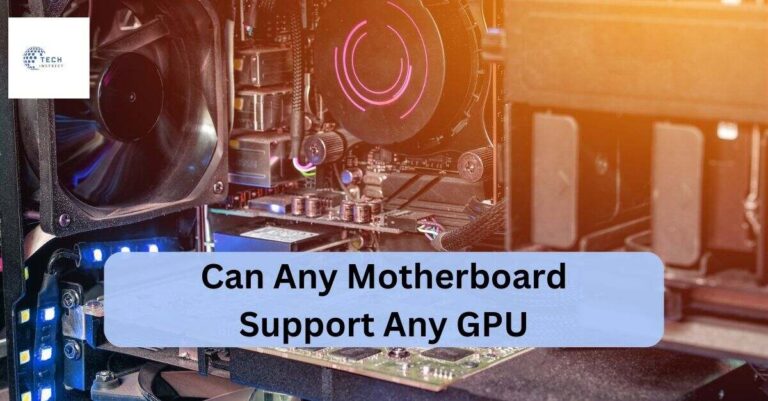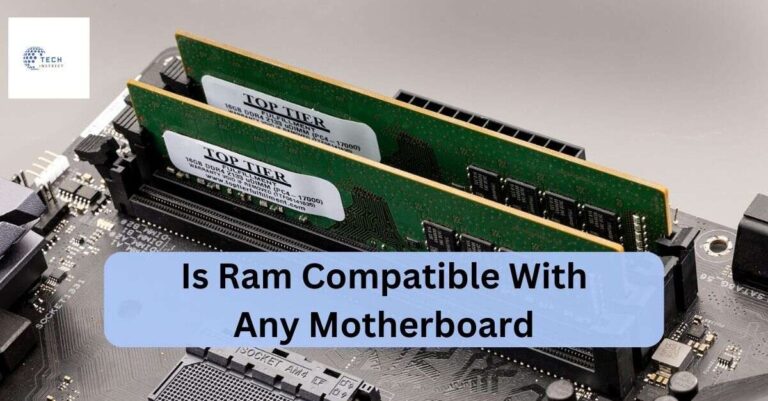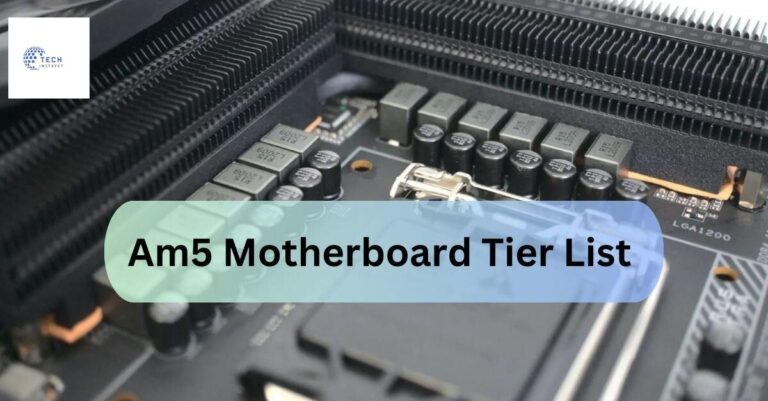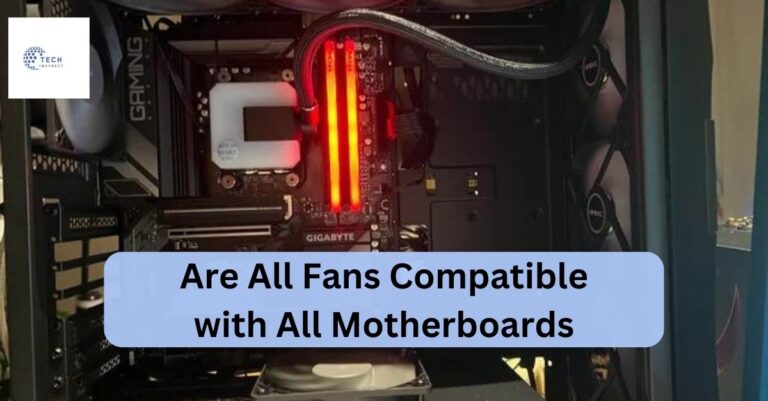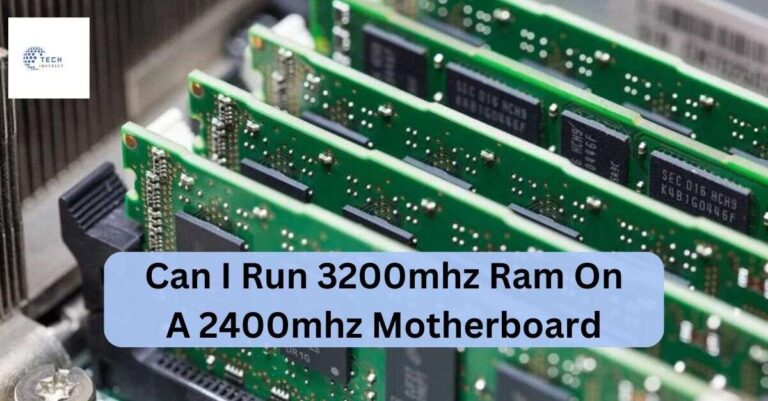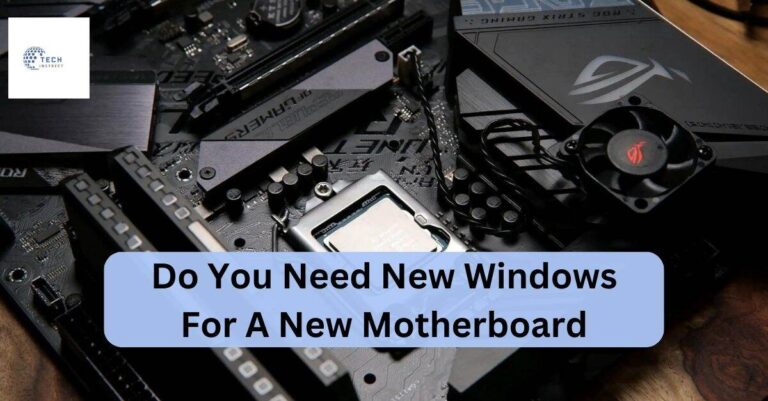How Many SATA Ports Does a Motherboard Have – A Comprehensive Guide!
“A motherboard typically has 4 to 8 SATA ports for connecting storage devices like HDDs and SSDs. The exact number can vary based on the motherboard size, chipset, and manufacturer design choices.”
In this article, we discuss the number and types of SATA ports typically found on motherboards, their uses for connecting storage devices, and factors influencing their quantity.
We also cover methods to expand SATA ports and compare them to newer technologies like NVMe and M.2. Finally, we provide practical insights and expert opinions on optimizing motherboard storage configurations.
Basic Overview Of Motherboards!
Motherboards are the primary circuit boards in computers that house the CPU, memory, and other essential components. They facilitate communication between the various parts of the computer, ensuring everything works harmoniously.
Key components include the chipset, CPU socket, RAM slots, expansion slots, and, of course, SATA ports. The motherboard acts as the “nervous system” of the computer, connecting different parts and allowing them to communicate with each other.

Without a Motherboard, no computer can function because it is responsible for everything from power distribution to data exchange.
Introduction To Sata Ports!
SATA ports are connectors on the motherboard used for connecting storage devices. They have evolved significantly over the years, with advancements in speed and efficiency.
There are different types of SATA ports, including SATA I, II, and III, each offering varying data transfer speeds.
Types Of Sata Ports:
- SATA I (1.5 Gb/s): The first generation of SATA interfaces, offering speeds up to 1.5 gigabits per second.
- SATA II (3 Gb/s): The second generation, doubling the speed to 3 gigabits per second.
- SATA III (6 Gb/s): The third and current generation, offering speeds up to 6 gigabits per second.
The evolution of SATA ports has significantly improved data transfer speeds and overall system performance. Each new generation has brought about enhancements that allow for faster and more efficient data handling.
Sata Port Specifications!
SATA ports have specific technical specifications that determine their speed and performance. SATA III, the most recent version, offers data transfer speeds up to 6 Gb/s.
Compatibility with various storage devices is a key consideration, ensuring that your drives can operate at their maximum potential.
Technical Specifications:
- Connector Type: L-shaped, ensuring a secure connection.
- Cable Length: Up to 1 meter, allowing flexibility in case design.
- Hot-Swappable: Allows drives to be connected or disconnected without shutting down the system.
- Backward Compatibility: SATA III ports can connect to SATA I and II devices, though they will operate at the lower speeds.
These specifications ensure that SATA ports provide reliable and fast connections for storage devices, which is crucial for tasks that require high data throughput, such as gaming, video editing, and large-scale data processing.
Number Of Sata Ports On Various Motherboards!
The number of SATA ports on a motherboard can vary widely. Consumer motherboards typically feature between 4 to 8 SATA ports, while high-end models may offer more.
Server and workstation motherboards often have a greater number of SATA ports to support extensive storage needs.

Consumer Motherboards:
- Entry-Level: Usually have 4-6 SATA ports, suitable for basic computing needs.
- Mid-Range: Typically offer 6-8 SATA ports, ideal for gaming and multimedia systems.
- High-End: Can feature 8 or more SATA ports, designed for enthusiasts and professionals.
Server and Workstation Motherboards:
- Server Motherboards: Often include 8-12 SATA ports, supporting multiple drives for data storage and redundancy.
- Workstation Motherboards: Can have 10 or more SATA ports, allowing for extensive storage configurations needed for professional applications.
The number of SATA ports needed depends on the intended use of the computer. For most users, 4-6 ports are sufficient. However, professionals who require extensive storage may need a motherboard with more ports.
Factors Influencing The Number Of Sata Ports!
Several factors determine the number of SATA ports on a motherboard. The size of the motherboard (ATX, Micro-ATX, Mini-ITX) plays a significant role, with larger boards generally offering more ports.
The chipset also imposes limitations, as different chipsets support different numbers of SATA ports. Manufacturer design choices further influence the final count.
Motherboard Size:
- ATX: Typically offers the most ports due to its larger size.
- Micro-ATX: Offers fewer ports but balances size and expandability.
- Mini-ITX: Limited space means fewer SATA ports, usually 2-4.
Chipset Limitations:
- Different chipsets support varying numbers of SATA ports. For example, high-end chipsets like the Intel Z590 support more ports compared to entry-level chipsets like the H410.
Manufacturer Design Choices:
- Some manufacturers prioritize additional features like more M.2 slots over extra SATA ports, affecting the total count.
These factors collectively influence how many SATA ports a motherboard can support, and understanding them can help in choosing the right motherboard for your needs.
Common Uses For Sata Ports!
SATA ports are primarily used to connect storage devices like hard drives and SSDs. They are also used for connecting optical drives, providing versatile options for expanding your system’s storage and functionality.
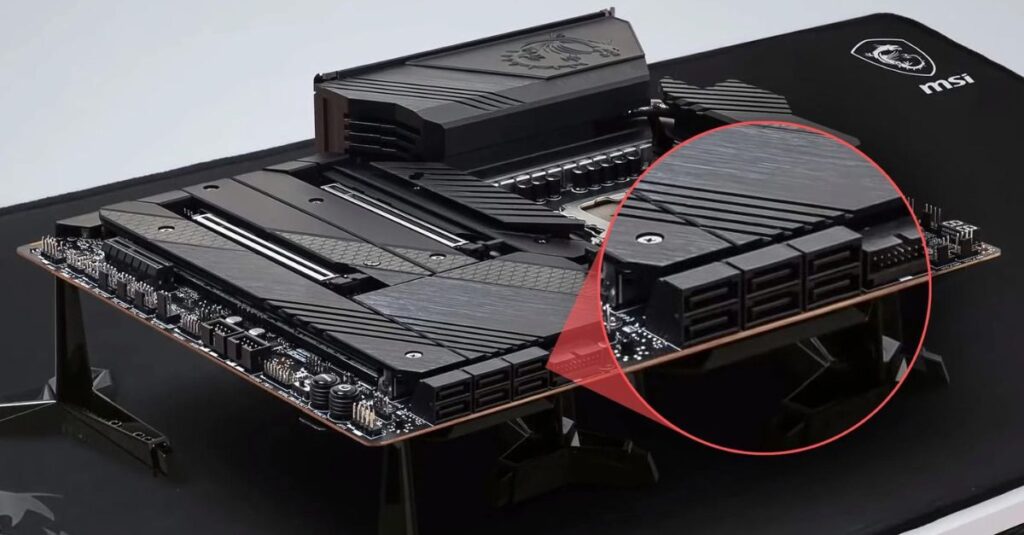
Connecting Hard Drives:
- Hard drives (HDDs) are the traditional storage solution, offering large capacities at affordable prices. They are connected via SATA ports to provide bulk storage for files, applications, and games.
Connecting Ssds:
- Solid-state drives (SSDs) offer faster data access speeds compared to HDDs. SATA ports are used to connect 2.5-inch SSDs, providing quick boot times and rapid file access.
Connecting Optical Drives:
- Optical drives like DVD and Blu-ray players are connected via SATA ports. Although less common in modern builds, they are still used for reading and writing optical media.
These uses highlight the versatility of SATA ports and their importance in building a functional and efficient computer system.
Comparative Analysis Of Sata Ports On Popular Motherboards!
A detailed analysis of SATA ports on popular motherboards reveals significant variations. Comparing different brands and models helps highlight the benefits and drawbacks of various configurations.
More SATA ports offer greater flexibility but may not always be necessary depending on your specific needs.

Popular Motherboard Models:
- ASUS ROG Strix Z590-E: Features 6 SATA ports, suitable for high-end gaming and productivity.
- MSI B450 Tomahawk Max: Offers 6 SATA ports, balancing performance and affordability for mid-range builds.
- Gigabyte AORUS X570 Master: Provides 8 SATA ports, ideal for enthusiasts and professionals.
Comparison:
- ASUS ROG Strix Z590-E: 6 SATA ports, high performance, suitable for gamers and power users.
- MSI B450 Tomahawk Max: 6 SATA ports, cost-effective, great for budget-conscious builders.
- Gigabyte AORUS X570 Master: 8 SATA ports, extensive storage options, perfect for advanced users.
Understanding these comparisons can help in selecting the right motherboard based on your storage needs and budget.
Impact Of Sata Ports On System Performance!
The number and quality of SATA ports can directly impact system performance. They influence data transfer speeds, which are crucial for tasks like gaming and video editing. More SATA ports also mean the potential for more storage devices, enhancing overall system efficiency.
Data Transfer Speeds:
- SATA III ports provide up to 6 Gb/s, ensuring fast data transfer for connected drives. This speed is sufficient for most consumer applications.
Influence On Gaming Performance:
- Faster data access speeds from SSDs connected via SATA III ports can reduce game load times and improve overall gaming experience.
Overall System Efficiency:
- Having multiple SATA ports allows for a diversified storage setup, optimizing system performance by distributing data across different drives.
These performance impacts underscore the importance of having a sufficient number of high-quality SATA ports on a motherboard.
Expanding Sata Ports!
If a motherboard lacks sufficient SATA ports, there are ways to expand them. SATA expansion cards and SATA multipliers are common solutions. Each has its pros and cons, with expansion cards typically offering better performance and reliability.

Sata Expansion Cards:
- Plug into PCIe slots and add additional SATA ports. They offer high performance and reliability, ideal for users needing more storage connections.
Sata Multipliers:
- Allow multiple drives to connect to a single SATA port. They are cost-effective but can reduce individual drive performance due to shared bandwidth.
Pros And Cons:
- Expansion Cards: High performance, reliable, more expensive.
- Multipliers: Cost-effective, easier to install, potential performance loss.
Understanding these options can help in choosing the right method to expand SATA ports based on your needs and budget.
Future Of Sata Ports!
As technology advances, the role of SATA ports is evolving. NVMe and other high-speed interfaces are becoming more prevalent, offering faster data transfer rates. Future motherboard designs may feature fewer SATA ports as these new technologies become standard.
Upcoming Technologies:
- NVMe (Non-Volatile Memory Express): Offers significantly faster data transfer speeds than SATA, up to 32 Gb/s.
- M.2 Slots: Compact slots on the motherboard that support NVMe SSDs, providing high-speed storage options.
Predictions For Future Designs:
- Future motherboards may prioritize M.2 slots and NVMe interfaces over SATA ports, focusing on faster data transfer technologies.
These trends indicate a shift towards faster and more efficient storage solutions, potentially reducing the reliance on traditional SATA ports.
Case Studies!
Real-world examples of systems with different SATA port configurations provide valuable insights. Performance analysis of these systems highlights how the number of SATA ports can affect overall functionality and efficiency.
Case Study 1 ~ Gaming Pc Build:
- Configuration: 6 SATA ports, 2 HDDs, 2 SSDs, 1 optical drive.
- Performance: Fast load times, ample storage for games and media, efficient data distribution.
Case Study 2 ~ Professional Workstation:
- Configuration: 10 SATA ports, 4 HDDs, 4 SSDs, 2 optical drives.
- Performance: High-speed data access for professional applications, extensive storage capacity, optimized for multitasking.
These case studies demonstrate how different SATA port configurations can meet various computing needs, from gaming to professional work.
Expert Insights!
Industry professionals offer valuable insights into the optimal number of SATA ports for various use cases. Their opinions help guide decisions for both consumer and professional applications.
Expert Quote 1:
- “For most gamers, 4-6 SATA ports are sufficient to cover storage needs without compromising performance.”
Expert Quote 2:
- “Professionals working with large datasets or multimedia files should consider motherboards with 8 or more SATA ports to ensure adequate storage and fast data access.”
These insights provide practical advice for choosing the right motherboard based on your specific requirements.
FAQs:
How Many Sata Ports Do I Need?
The number of SATA ports needed depends on your storage requirements. For typical users, 4-6 ports are sufficient. For professionals or servers, more may be necessary.
Can I Add More Sata Ports To My Motherboard?
Yes, you can use SATA expansion cards or multipliers to add more SATA ports to your motherboard.
Are Sata Ports Backward Compatible?
Yes, SATA ports are backward compatible. You can use older SATA I or II devices with a SATA III port, though they will operate at the lower speed.
What Are The Alternatives To Sata Ports?
Alternatives to SATA ports include NVMe and M.2 interfaces, which offer faster data transfer rates.
Conclusion:
SATA ports play a critical role in the functionality and performance of a computer system. Understanding their specifications, uses, and the number you need is essential for building or upgrading your PC.
As technology advances, keeping an eye on new developments will ensure you stay ahead of the curve. For further reading and detailed guides, continue exploring our comprehensive resources on PC building and upgrades.



